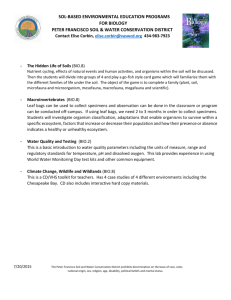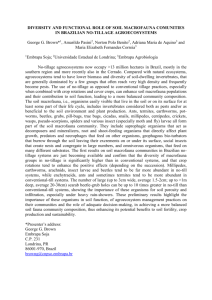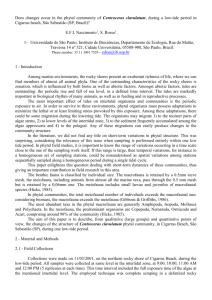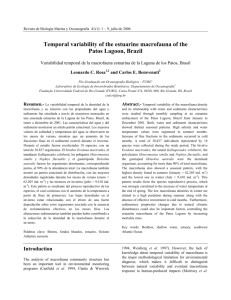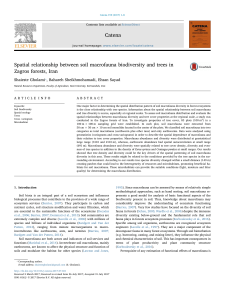December 2013
advertisement
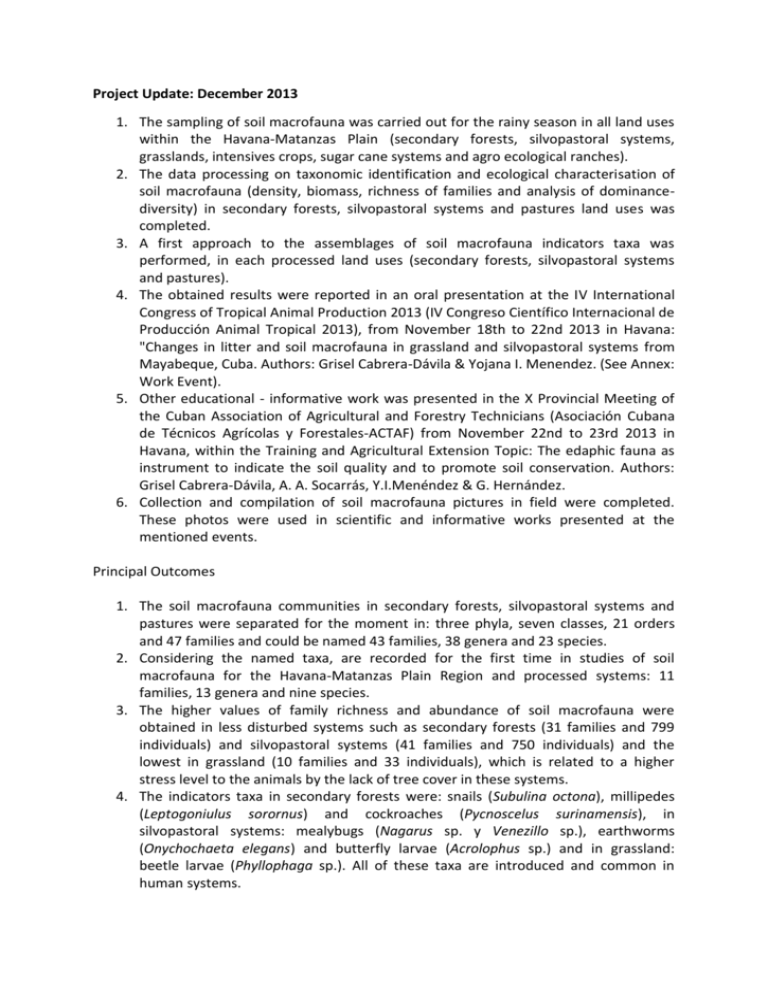
Project Update: December 2013 1. The sampling of soil macrofauna was carried out for the rainy season in all land uses within the Havana-Matanzas Plain (secondary forests, silvopastoral systems, grasslands, intensives crops, sugar cane systems and agro ecological ranches). 2. The data processing on taxonomic identification and ecological characterisation of soil macrofauna (density, biomass, richness of families and analysis of dominancediversity) in secondary forests, silvopastoral systems and pastures land uses was completed. 3. A first approach to the assemblages of soil macrofauna indicators taxa was performed, in each processed land uses (secondary forests, silvopastoral systems and pastures). 4. The obtained results were reported in an oral presentation at the IV International Congress of Tropical Animal Production 2013 (IV Congreso Científico Internacional de Producción Animal Tropical 2013), from November 18th to 22nd 2013 in Havana: "Changes in litter and soil macrofauna in grassland and silvopastoral systems from Mayabeque, Cuba. Authors: Grisel Cabrera-Dávila & Yojana I. Menendez. (See Annex: Work Event). 5. Other educational - informative work was presented in the X Provincial Meeting of the Cuban Association of Agricultural and Forestry Technicians (Asociación Cubana de Técnicos Agrícolas y Forestales-ACTAF) from November 22nd to 23rd 2013 in Havana, within the Training and Agricultural Extension Topic: The edaphic fauna as instrument to indicate the soil quality and to promote soil conservation. Authors: Grisel Cabrera-Dávila, A. A. Socarrás, Y.I.Menéndez & G. Hernández. 6. Collection and compilation of soil macrofauna pictures in field were completed. These photos were used in scientific and informative works presented at the mentioned events. Principal Outcomes 1. The soil macrofauna communities in secondary forests, silvopastoral systems and pastures were separated for the moment in: three phyla, seven classes, 21 orders and 47 families and could be named 43 families, 38 genera and 23 species. 2. Considering the named taxa, are recorded for the first time in studies of soil macrofauna for the Havana-Matanzas Plain Region and processed systems: 11 families, 13 genera and nine species. 3. The higher values of family richness and abundance of soil macrofauna were obtained in less disturbed systems such as secondary forests (31 families and 799 individuals) and silvopastoral systems (41 families and 750 individuals) and the lowest in grassland (10 families and 33 individuals), which is related to a higher stress level to the animals by the lack of tree cover in these systems. 4. The indicators taxa in secondary forests were: snails (Subulina octona), millipedes (Leptogoniulus sorornus) and cockroaches (Pycnoscelus surinamensis), in silvopastoral systems: mealybugs (Nagarus sp. y Venezillo sp.), earthworms (Onychochaeta elegans) and butterfly larvae (Acrolophus sp.) and in grassland: beetle larvae (Phyllophaga sp.). All of these taxa are introduced and common in human systems. 5. The educational informative work presented at the ACTAF Event, included aspects related to the classification, composition, function and methodology sampling in field of soil fauna. The work approaches also to the effect of different management practices on the soil fauna and some possible taxa indicators to be used to show the soil quality. This information will contribute in the realisation of committed educational manual.


